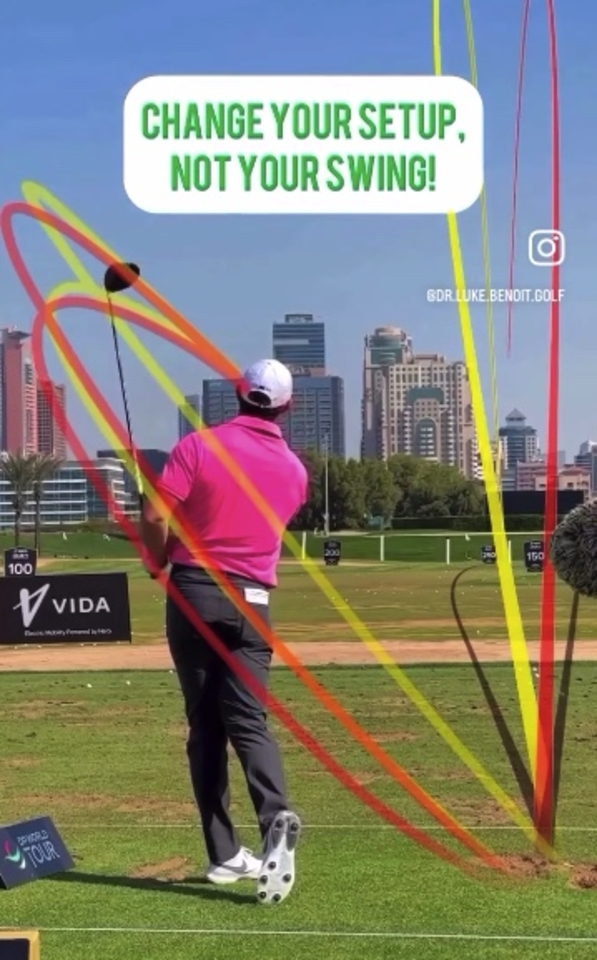Unlock the Secrets to Imagining the Perfect Golf Shot, From Launch to Landing

Visualization is a powerful tool in sports, particularly golf, where precision, strategy, and mental strength are paramount. It's not just a mental exercise; there's science behind it. When you visualize a shot, your brain activates the same neural pathways as when you actually perform the action. This helps to improve muscle memory and enhance your performance. A professional golfer visualizes each shot meticulously before swinging the club. This process involves imagining the launch direction, the flight trajectory, the apex, the curve, and the ball’s landing and subsequent roll. This article explores the intricacies of how top golfers use visualization to enhance their performance and achieve remarkable accuracy and consistency.
The Importance of Visualization: While visualization is a critical tool for improving your golf game, it's important to note that it's not a magic bullet. It requires practice and patience to master. Understanding this, let's delve into why visualization is so important for your golf game.
Step-by-Step Visualization Techniques: A detailed guide on how professional golfers visualize from launch to the ball's landing.
Practical Applications: How you can apply these techniques to your game to see immediate improvements.
Before a golfer even sets foot on the tee, they have a clear mental image of the shot they intend to play. This mental rehearsal is more than just a routine; it’s a detailed execution plan that involves several critical components:
A professional golfer starts the visualization process by focusing on the intended launch direction of the ball. They consider factors such as wind direction, hazards, and the layout of the hole to choose the optimal path. The ball's trajectory is subsequent—whether it needs a higher loft to clear an obstacle or a lower trajectory to combat a headwind. Imagining the trajectory helps the golfer decide on the club selection and the swing dynamics needed to achieve the desired flight path.
Visualization continues with the golfer imagining the apex—the highest point—of the ball’s flight, which is crucial for gauging the ball's descent toward the target. The curve, or the shot shape (draw or fade), is also visualized based on the hole’s demands and the golfer's strategy. A draw might be visualized to wrap around an obstacle or to roll further on landing, while a fade could be used to avoid hazards or to hit a target with precision.
The final phase in visualization is foreseeing where the ball will land, which includes predicting how the ball will interact with the ground—where it will first touch down, bounce, and its final resting spot after rolling. This aspect is often the most detailed, as it requires understanding the course’s topography, the day’s weather conditions, and the greens' firmness.
Imagine hitting a golf shot through a window frame—a common visualization technique that helps define the initial direction and keeps the focus tight and controlled. The window represents the immediate flight path, encouraging precision right from the launch.
Develop a consistent pre-shot routine that incorporates visualization. Begin by standing behind the ball and picturing the shot in your mind’s eye, from the swing to the ball’s flight to its final position.
Try to involve all senses in your visualization. Hear the sound of the club striking the ball, feel the club's grip in your hands, and see the ball's flight. The more realistic the imagery, the better prepared you’ll be when executing the shot.
During your practice sessions, visualize different shots, including various trajectories, wind conditions, and course layouts. The more scenarios you envision, the more successful you will be on the course.
After each shot, compare the actual outcome with your visualization. This feedback will help refine your ability to visualize accurately and adjust techniques as needed.
Visualization is not just about seeing the shot before it happens; it's about integrating detailed planning and mental preparation into every aspect of your golf game. By adopting these visualization techniques, you can enhance not only your focus and performance but also your communication and teamwork on the course. This holistic approach to visualization can transform your game and help you unlock your full potential.
Ready to improve your golf game? Visit Bryn Parry Golf to book a lesson with a professional who can tailor these visualization techniques to your needs. Unlock your potential and transform your game today!
Improving Your Golf Shots with Visualization Techniques: This article from GBGolf delves into practical visualization strategies that can enhance a golfer's performance. It discusses creating a "mental movie" to visualize the perfect golf shot, emphasizing the need to be specific and detailed in imagining the trajectory and landing of the ball. The article also highlights the importance of relaxation and maintaining a positive mindset through visualization techniques, which can be especially useful in stressful situations on the course. Read more about these techniques here.
The Power of Visualization In Golf: Published by Golf State of Mind, this article explores how visualization impacts golf performance by focusing on both the outcome and the process. It explains the concept of 'external focus'—visualizing the shot while staying focused on the target, a technique supported by examples from renowned golfers like Tiger Woods. It also discusses the benefits of visualizing between shots to manage mood and tension and how visualization can aid in making swing changes during practice. This comprehensive approach can significantly aid golfers in mentally preparing for every aspect of their game. Learn more about the power of visualization here.
Enhance your understanding of golf shot visualization with a captivating video featuring Rory McIlroy. Watch as Rory expertly demonstrates how to hit both a draw and a fade, providing a visual guide to what a tour pro visualizes and executes during their game. Rory provides a fantastic opportunity to see the techniques discussed in this article in action and to learn from one of the best golfers in the world.
Click here to subscribe and start improving your game with every video: Subscribe to My YouTube Channel